소개
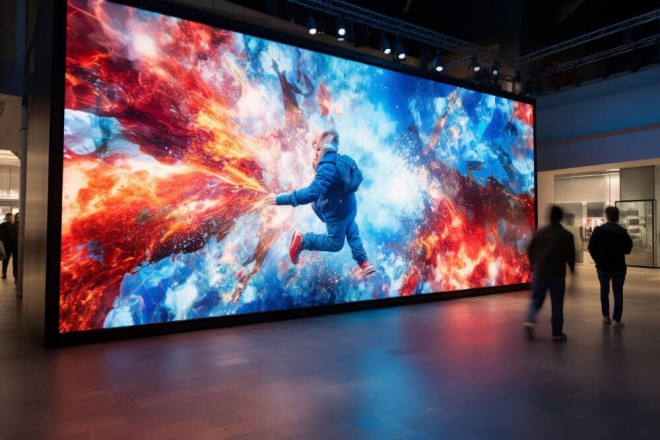
사물인터넷 시대의 도래와 함께 LED 디스플레이 화면은 기술 혁신의 최전선에 있습니다. 구매했거나 구매하려는 사용자에게 발광 다이오드 표시 스크린이 기술의 미래 개발 추세를 이해하는 것이 중요합니다.
이 글에서는 LED 디스플레이 화면이 지능과 상호 연결의 배경 하에서 어떻게 발전할지 살펴보고, 이러한 변화가 사용자에게 어떤 실질적인 이점을 가져다 줄 수 있는지 알아보겠습니다.
1. 지능형 LED 디스플레이 화면 개발
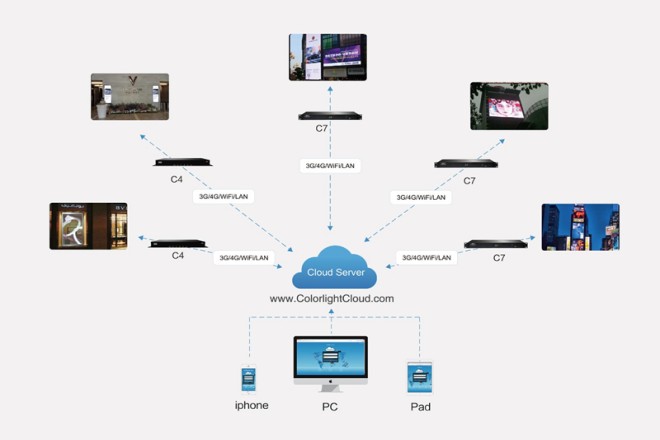
1) 자동 조정 명도 그리고 에너지를 절약하세요
거리를 걸을 때, 날씨가 맑든 흐리든, 길가에 있는 LED 광고판이 자동으로 밝기를 조절하여 언제든지 광고판에 있는 정보를 선명하게 볼 수 있고, 그렇게 하면 많은 전기를 절약할 수 있다고 상상해보세요. 이것이 스마트 LED 디스플레이 화면의 마법입니다!
스마트 LED 디스플레이 화면에는 "스마트" 제어 시스템이 내장되어 있어 눈처럼 주변 빛의 강도를 감지할 수 있습니다. 태양이 강하면 자동으로 화면을 밝게 하여 콘텐츠가 선명하게 보이도록 하고, 밤이 되면 자동으로 어두워져 시청에 영향을 미치지 않고 에너지를 크게 절약할 수 있습니다.
이러한 설계는 LED 디스플레이 화면을 더욱 환경 친화적으로 만들 뿐만 아니라, 운영 비용도 절감합니다.
2) 당신과 상호 작용; 더 재미있습니다
스마트 LED 디스플레이는 밝기를 자동으로 조절할 수 있을 뿐만 아니라 사용자와 상호 작용할 수도 있습니다! 네, 맞는 말씀입니다.
쇼핑몰에서 쇼핑을 하고 있는데 갑자기 관심 있는 상품을 광고하는 LED 디스플레이가 보인다고 상상해보세요.
더욱 놀라운 점은 화면을 터치하거나 휴대폰을 꺼내 QR 코드를 스캔하여 쿠폰이나 선물을 받을 수 있는 광고 속 인터랙티브 게임에 참여할 수 있다는 것입니다. 이런 쇼핑 경험이 흥미롭고 실용적이지 않나요?
스마트 LED 디스플레이는 터치 스크린, 휴대폰, 기타 스마트 하드웨어를 결합하여 사용자와 실시간 상호작용을 실현합니다.
이러한 상호작용은 사용자의 참여감을 강화할 뿐만 아니라 광고를 보다 정확하고 효과적으로 만듭니다. 상인에게 이는 더 높은 전환율과 더 나은 브랜드 이미지를 의미합니다.
2. LED 디스플레이와 인터넷의 통합
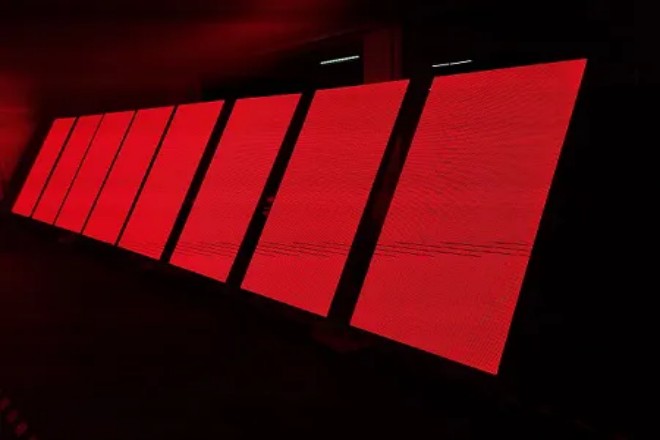
1) 원격 제어 및 모니터링: 원거리에서도 편리한 관리
LED 디스플레이와 인터넷의 통합에 대해 이야기할 때, 가장 먼저 떠오르는 것은 원격 제어 및 모니터링 기능입니다.
사무실에 앉아서도 여러 도시와 지역에 분산된 LED 디스플레이 화면을 쉽게 관리할 수 있다고 상상해보세요. 편리하지 않나요?
이 원격 관리가 인터넷 기술의 지원 덕분에 실현되었습니다. 인터넷을 통해 컴퓨터를 작동하듯이 LED 디스플레이 화면의 관리 시스템에 원격으로 접근할 수 있습니다.
이 시스템에서는 각 디스플레이 화면의 실시간 상태를 확인할 수 있습니다. 예를 들어, 콘텐츠가 재생되고 있는지, 밝기가 적절한지, 오류가 있는지 등을 확인할 수 있습니다.
더 중요한 것은 디스플레이 화면을 원격으로 제어할 수도 있다는 것입니다. 예를 들어, 언제든지 재생되는 콘텐츠를 변경하고, 밝기와 색상과 같은 매개변수를 조정하고, 디스플레이 화면이 항상 최상의 효과를 제공하도록 할 수 있습니다.
이 작업은 빠를 뿐만 아니라 정확하기 때문에 관리 효율성이 크게 향상됩니다.
여러 디스플레이 화면을 사용하는 사용자에게는 원격 제어 및 모니터링 기능이 더욱 필수적입니다. 각 위치로 직접 가서 조작하지 않고도 여러 위치의 디스플레이 화면을 쉽게 관리할 수 있습니다. 이는 시간을 절약할 뿐만 아니라 관리 비용도 절감합니다.
2) 데이터 통합 및 분석: LED 디스플레이 화면은 데이터 시각화를 위한 새로운 창이 됩니다.
원격 제어 및 모니터링 외에도 LED 디스플레이 화면과 인터넷을 통합하면 데이터 통합 및 분석이라는 또 다른 중요한 기능도 제공됩니다.
현대 사회에서는 데이터가 어디에나 있습니다. 환경 모니터링에서 산업 생산, 교통 관리에서 도시 관리에 이르기까지 모든 분야에서 많은 데이터가 생성됩니다. 이러한 데이터를 효과적으로 사용하고 분석할 수 있다면 귀중한 통찰력과 의사 결정 지원을 제공할 수 있습니다.
그리고 LED 디스플레이 화면은 이러한 데이터 시각화 디스플레이에 이상적인 도구입니다. IoT 기기에 연결함으로써 LED 디스플레이는 다양한 기기에서 실시간으로 데이터를 수신하고 표시할 수 있습니다.
예를 들어, 환경 모니터링 분야에서 LED 디스플레이는 공기 질, 온도, 습도와 같은 환경 데이터를 표시할 수 있으며, 산업 생산 분야에서는 출력, 효율성, 고장률과 같은 생산 데이터를 표시할 수 있습니다.
더 중요한 점은 이러한 데이터가 LED 디스플레이에 직관적인 차트나 애니메이션 형태로 표시될 뿐만 아니라, 심층 분석을 위해 인터넷을 통해 백그라운드 관리 시스템으로 전송할 수도 있다는 것입니다.
데이터를 마이닝하고 분석하면 데이터 간의 연관성과 패턴을 찾아 더욱 정보에 입각한 결정을 내릴 수 있습니다.
예를 들어, 교통관리 분야에서 교통흐름 데이터를 분석하여 미래 교통상황을 예측하고, 교통체증을 완화하기 위한 대응조치를 취할 수 있습니다. 도시관리 분야에서는 도시 운영 데이터를 분석하여 도시관리의 취약점을 파악하고 개선방안을 제시할 수 있습니다.
3. LED 디스플레이 해상도 및 화질 향상
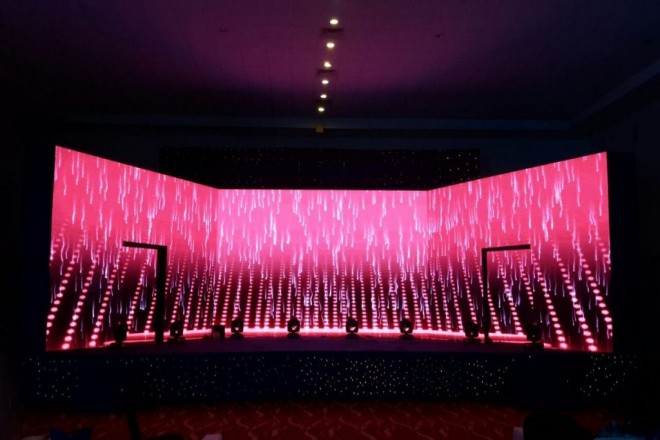
1) 미니/마이크로 LED 기술: LED 디스플레이의 정교함과 고품질 혁명
LED 디스플레이의 해상도와 화질 개선에 대해 이야기할 때 미니/마이크로 LED 기술은 의심할 여지 없이 피할 수 없는 주제입니다. 이 두 기술은 서로 다른 방식으로 LED 디스플레이의 더 높은 품질과 더 높은 해상도를 향한 개발을 공동으로 촉진했습니다.
- 미니 LED 기술:
미니 LED는 이름에서 알 수 있듯이 기존 LED보다 작은 LED 램프 비드입니다. 이 기술은 LED 램프 비드의 크기를 줄여 디스플레이 화면의 동일한 영역에 더 많은 LED 램프 비드를 배치할 수 있습니다.
이런 방식으로 각 픽셀은 더 많은 LED 램프 비드로 구성될 수 있어 디스플레이 화면의 밝기와 대비를 개선할 수 있습니다. 더 중요한 것은 미니 LED 기술이 더 정교한 로컬 디밍을 달성할 수 있다는 것입니다.
즉, 그림의 다양한 내용에 따라 각 영역의 밝기를 지능적으로 조절하여 어두운 부분은 더 진하게, 밝은 부분은 더 눈부시게 표현하고, 전반적인 그림의 레이어링과 디테일 표현이 대폭 향상됩니다.
- 마이크로 LED 기술:
미니 LED가 LED 기술의 세련된 업그레이드라면, 마이크로 LED는 LED 기술의 혁신적인 돌파구입니다. 마이크로 LED 기술은 마이크론 레벨의 LED 램프 비드를 사용하는데, 이는 추가 백라이트 층이나 필터 없이도 픽셀로 직접 사용할 수 있습니다.
따라서 Micro LED 디스플레이는 매우 낮은 에너지 소비와 매우 높은 안정성을 유지하면서도 매우 높은 픽셀 밀도와 해상도를 달성할 수 있습니다.
또한, Micro LED는 자체 발광 기술이기 때문에 각 픽셀이 스위치와 밝기를 독립적으로 제어할 수 있어 보다 정확한 색상 성능과 더 깊은 검정색 성능을 구현할 수 있습니다.
미니/마이크로 LED 기술을 적용하여 LED 디스플레이 화면의 해상도, 밝기, 대비, 색상 재현 등이 크게 향상되어 사용자에게 더욱 사실적이고 섬세하며 충격적인 시각적 경험을 선사합니다.
2) 4K/8K 초고화질 디스플레이 : 획기적인 도약 해결 LED 디스플레이 화면
미니/마이크로 LED 기술이 LED 디스플레이 화면 품질 향상을 위한 내재적 동력이라면, 4K/8K 초고화질 디스플레이는 LED 디스플레이 화면 해상도 향상을 촉진하는 외재적 수요입니다.
- 4K 디스플레이:
4K 해상도, 즉 3840×2160픽셀은 초고화질 비디오 포맷의 한 종류입니다. 기존의 고화질 비디오와 비교했을 때 4K 비디오는 해상도가 더 높고 색상 정보가 더 풍부하며 더 섬세하고 사실적인 영상 효과를 표현할 수 있습니다.
LED 디스플레이 화면의 경우 4K 디스플레이를 구현하려면 충분한 픽셀 밀도와 색 재현 기능이 필요합니다.
이로 인해 LED 디스플레이 화면 제조업체는 디스플레이 화면에 대한 4K 비디오의 높은 요구 사항을 충족하기 위해 지속적으로 생산 공정과 기술 수준을 개선해야 했습니다.
- 8K 디스플레이:
8K 해상도, 즉 7680×4320픽셀은 4K의 4배 해상도이며 초고화질 영상 포맷에 대한 더 높은 표준입니다. 8K 영상은 더욱 섬세하고 사실적인 영상 디테일을 표현할 수 있으며, 심지어 영상 속 인물의 모공과 질감까지도 볼 수 있습니다.
LED 디스플레이 화면이 8K 디스플레이를 구현하려면 매우 높은 픽셀 밀도와 색상 재현 능력과 고속 데이터 전송 및 처리 능력이 필요합니다. 이는 혁신을 더욱 촉진하고 LED 디스플레이 기술을 업그레이드합니다.
4K/8K 초고화질 디스플레이의 개발은 LED 디스플레이 화면 해상도의 지속적인 향상을 촉진했을 뿐만 아니라, 색상 관리, 영상 처리, 데이터 전송 등 분야에서 LED 디스플레이 화면의 기술적 진보를 촉진했습니다.
이러한 기술의 발전으로 LED 디스플레이 화면은 초고화질 영상을 제공할 때에도 높은 수준의 색상 일관성과 화면 안정성을 유지하여 사용자에게 더욱 충격적이고 사실적인 시각적 경험을 제공할 수 있습니다.
4. LED 디스플레이 스크린의 응용 분야 확대
1) 신흥시장에서의 적용
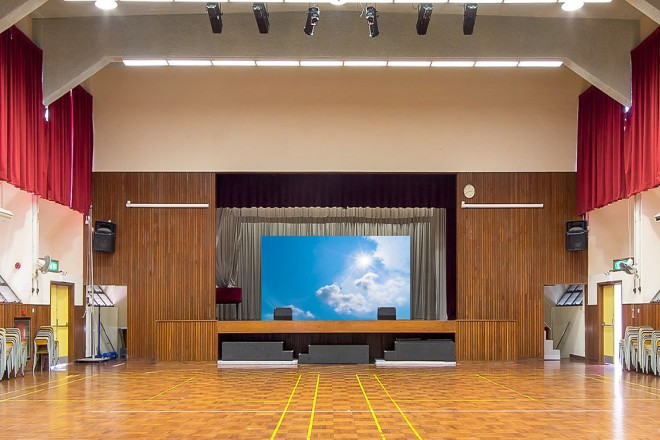
- 교육 필드
교육 분야에서는 LED 디스플레이 화면의 적용이 점점 더 확대되고 있습니다.
이러한 기술은 교사와 학생들에게 고화질 및 생생한 시각적 경험을 제공하기 위해 스마트한 상호작용 교실에서 활용될 뿐만 아니라, 캠퍼스 문화 생활을 풍요롭게 하기 위해 대형 화면과 캠퍼스 활동 무대 배경을 홍보하는 데도 자주 사용됩니다.
또한, 캠퍼스 내 모니터링 및 제어 센터에 LED 디스플레이 화면을 활용하여 다중 지점 모니터링을 구현하고 캠퍼스 안전을 보장할 수도 있습니다.

- 의료 분야
의료 분야에서도 LED 디스플레이 스크린의 적용이 눈길을 끌고 있습니다. 널리 사용되고 있습니다. 병원 대기실, 치료실, 회의실 및 기타 장소.
대기실의 LED 스크린에서는 의학 지식과 영상을 재생해 환자 경험을 향상할 수 있으며, 진료실의 LED 디스플레이 스크린에서는 약가, 진료과, 담당 의사 등의 정보를 표시해 환자가 진료를 받기 쉽도록 돕습니다.
회의실의 LED 디스플레이 화면은 의학 학술 교류 회의에 도움이 되고, 병원의 업무 역량을 향상시킵니다.
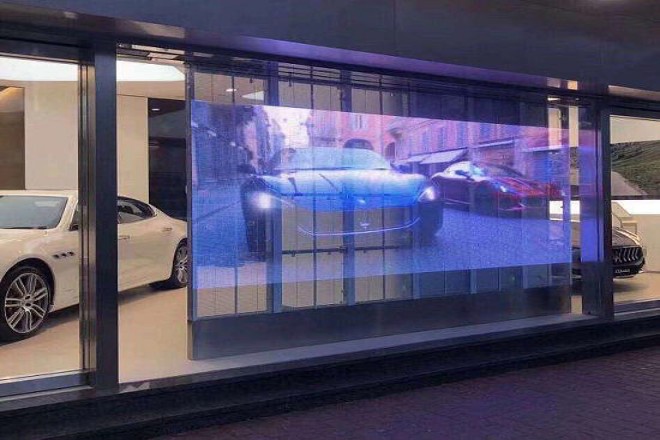
- 자동차 분야
자동차 4S 매장에서 LED 디스플레이 화면은 중요한 마케팅 도구가 되었습니다. 다양한 모델의 정보, 가격, 구성 등을 실시간으로 표시하여 소비자가 제품 기능을 빠르게 이해하도록 도울 수 있습니다.
동시에 LED 디스플레이 화면은 차량의 내부 구성, 주행 모드, 음향 효과 등을 표시해 소비자의 자동차 구매 경험을 향상할 수도 있습니다.
또한, 자동차 4S 매장의 LED 디스플레이 화면은 브랜드 이미지를 홍보하고 브랜드 인지도와 평판을 높이는 데에도 자주 사용됩니다.
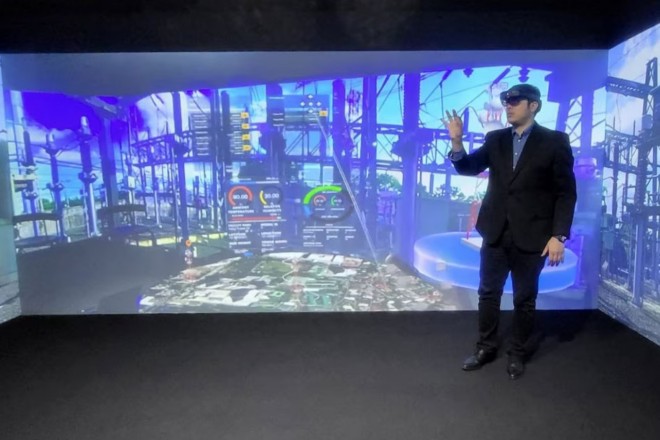
- VR 및 AR 분야
LED 디스플레이 화면과 VR 및 AR 기술의 결합은 사용자에게 새로운 시각적 경험을 제공합니다. VR 분야에서 대형 LED 화면은 기존 VR 장비 사용 시 불편함과 개별화된 이미지 문제를 해결하면서 더 많은 디스플레이 창의성과 매력을 제공할 수 있습니다.
AR 분야에서 LED 디스플레이 화면은 가상 장면과 캐릭터 간의 상호작용을 실현하여 광고, 영화 및 TV, 교육 및 기타 분야에 더욱 풍부한 디스플레이 방법을 제공합니다.
2) 문화관광산업의 통합
- LED 디스플레이 화면과 AI의 결합
AI 기술의 급속한 발전으로 LED 디스플레이 화면과 AI의 결합은 문화 및 관광 산업에 새로운 기회를 가져왔습니다.
AI 기술을 통해 LED 디스플레이 화면은 지능형 광고 푸시, 실시간 데이터 분석과 같은 기능을 실현하여 커뮤니케이션 효과를 향상시킬 수 있습니다.
동시에 AI 기술은 사용자의 선호도와 습관에 따라 자동으로 조정하고 최적화하여 사용자 경험을 개선할 수도 있습니다.
- LED 디스플레이 화면과 메타버스의 통합
떠오르는 디지털 세계인 메타버스는 문화 및 관광 산업의 새로운 발전 방향을 제공합니다. 메타버스와 현실 세계의 인터페이스인 LED 디스플레이 화면은 메타버스에서 가상 장면과 캐릭터를 표현하고 가상과 현실의 원활한 연결을 실현할 수 있습니다.
이러한 통합은 사용자에게 몰입형 경험을 제공할 뿐만 아니라 문화 및 관광 산업에 더욱 혁신적인 적용 시나리오를 제공합니다. 예를 들어, 새로운 유형의 디스플레이 제품인 LED 홀로그램 투명 스크린은 건물의 커튼월에 적용되어 도시 선전, 상업 광고 등을 수행하고 지나가는 사람들의 관심을 끌고 홍보 효과를 향상시킬 수 있습니다.
동시에 상업용 창문의 디스플레이 도구로도 사용할 수 있으며, 창문에 상품을 홀로그램 이미지 형태로 표시하여 상품의 등급과 질감을 향상시킬 수 있습니다.
결론
LED 디스플레이 화면의 미래는 무한한 가능성으로 가득 차 있으며, 그 개발은 우리의 생활과 업무 방식에 큰 영향을 미칠 것입니다. 사용자에게 이는 더 스마트하고, 더 연결되고, 더 환경 친화적인 디스플레이 솔루션을 의미합니다.
기술의 지속적인 발전으로 LED 디스플레이는 사용자에게 더 풍부하고 개인화된 경험을 제공하고 사물인터넷 시대에 없어서는 안 될 부분이 될 것입니다.
마지막으로 LED 디스플레이에 대해 더 알고 싶으시다면, 우리에게 연락해주세요.
